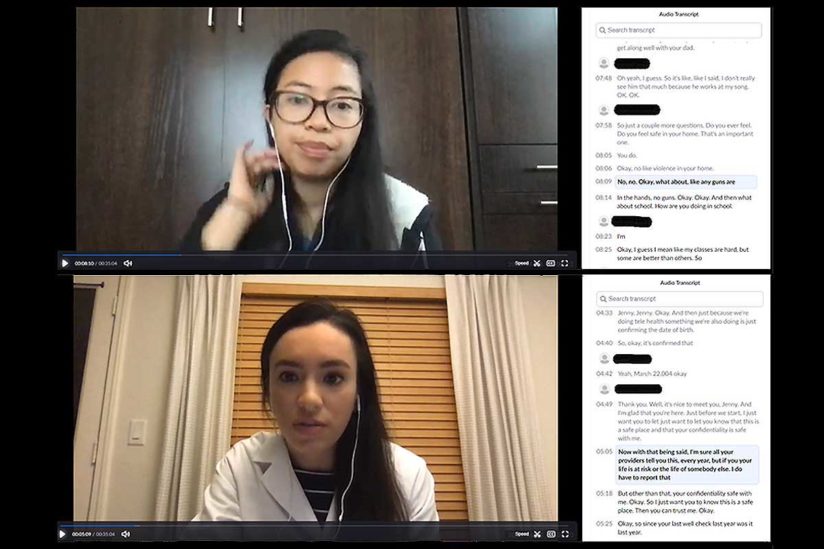Eve Muller is a trained actor who portrays patients to give medical school students a chance to practice their doctor-patient interactions. Her job, commonly titled “standardized patient,” helps faculty test the students’ interpersonal skills as well as their medical knowledge. The work requires simulating emotional and psychosocial issues along with physical symptoms in a realistic way.
In these sessions, non-verbal cues are key. But due to the pandemic, standardized actors must now interact with students entirely online.
“We all just went, ‘Oh shoot. How is this going to even work, and how are we going to work?’” Muller said.
As a result, standardized patients are spending most of their time calling their “doctors” to describe symptoms rather than acting them out.
Muller — who has been working as a standardized patient since 1990 — said she originally stumbled into the profession. Now, she works part-time to train other standardized patients for the Keck School of Medicine of USC.
“I really love the work that I do, and I’m grateful every day for this opportunity that I fell into accidentally,” she said. “It really is a privilege to be part of the education of someone who does what these students will one day do.”
Distancing impacts standardized patients across the community
The Los Angeles community of standardized patients is quite diverse, since schools require patients of varying ages and ethnicities. USC has a pool of about 300 standardized patients, though not all are active. About 100 of them stay in touch through Facebook, where Muller said they discuss auditions, plan get-togethers and check in on each other.
Connie Nelson has been working as an actor and a standardized patient for over 20 years. She said that once the safer-at-home orders went into effect in March, many standardized patient opportunities were put on hold.
“This is supposed to be our busiest time because this is when all the schools test,” she said. “What we do has definitely been limited.”
Even the available work comes with its share of challenges. Bob Rumnock has been working as a standardized patient since he came to Los Angeles 20 years ago to pursue acting. He said standardized patient work has been the ideal job, as it has allowed him to travel the world and strengthen the skills he needs for other roles. But he still noted that the transition to mainly telehealth training has proven to be tricky.
One example he gave involved playing a patient with appendicitis. Normally, the patient would verbally and physically communicate where the pain is, then the student would lay the patient back and check where that pain is specifically coming from. Without that physical interaction, the process almost becomes more of an interview.
“It’s really that human element that we focus on, and that’s the whole reason for standardized patients being there,” he said. “Otherwise, you could simply watch a video.”
Despite pandemic, this community grows stronger
Along with the rise in telehealth options, Muller said Zoom has been beneficial in training students to handle remote appointments like pharmacy cases or anything that doesn’t require a physical examination. But other avenues, such as occupational therapy, rely on physical contact.
Despite the shortage of standardized patient work and the adjustments that have been made in order to work remotely, all three actors agree that there are is a bright spot during this pandemic.
Their tightknit community has only grown stronger in the last few months. Muller said it has extended beyond checking in on each other to running errands and even financial assistance for those struggling to get work.
“It’s a very powerful thing to be part of a community that helps one another boost their immune system, boost their spirits and stay healthy,” she said, “not just physically but emotionally and mentally.”
— Grayson Schmidt


